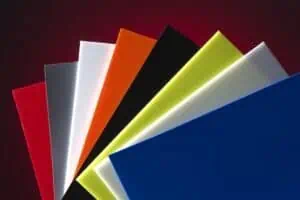
If a material is dimensionally stable, it keeps its shape and exact dimensions throughout the manufacturing process and during use, even in adverse or extreme environmental conditions. This is an essential quality for plastic goods and components, which are susceptible to wear, cracks, melting, and deformation over time. By choosing dimensionally stable plastics in your manufacturing projects, you can guarantee a higher degree of precision and reliable performance throughout the lifespan of the final product or assembly.
Learn more about the different factors that can impact the dimensional stability of polymers, so you can choose the right engineering plastics for your application.
Factors Affecting Dimensional Stability
Moisture, temperature, and mechanical stress are three of the biggest factors that can affect the dimensional stability of different plastics. However, by examining the degree to which these factors impact specific plastics, you can choose the most reliable substrates for your products or applications.
Moisture and Humidity
Most plastics will absorb some degree of moisture from their environment, but different plastics absorb different amounts of moisture at varying speeds. Over time, this moisture can affect the plastic’s mechanical strength, electrical properties (such as dielectric loss factor), and physical dimensions.
For example, polyamides, or nylon plastics, are very absorbent compared to other plastics. After assembly in a final product, the nylon component can absorb water that changes the component’s shape, insulative properties, and mechanical strength. However, polytetrafluoroethylene (PTFE) products are unique because they don’t absorb any water, making PTFE the preferred plastic for goods that will be used in wet or humid environments.
The following low-absorption plastics are also popular choices for plastic components that need to retain stable characteristics long-term:
These plastics do absorb some degree of moisture, but they still perform consistently in moist, high-temperature conditions. For best results, they need to be manufactured in extremely low-moisture conditions and thoroughly dried.
Temperature
Temperature can also significantly impact dimensional stability, as both high and low temperatures can make some plastics expand or contract, respectively. Compared to metals, plastics have higher thermal expansion coefficients and thus change more in size in response to heat. So, for complex or tightly-packed configurations that will operate in extremely low-temperature or high-temperature environments, select plastics with low thermal expansion coefficients.
Some popular plastics for use in extreme environments include:
- Polyetheretherketone (PEEK): This plastic offers relatively high thermal stability in hot environments.
- Polytetrafluoroethylene (PTFE): This plastic also offers relatively high thermal stability, even at high temperatures.
- Polyamide-imide (PAI): This engineering polymer has excellent stability and reliable mechanical characteristics at high temperatures.
- Polyetherimide (PEI): This is another popular engineering polymer with similar characteristics to PAI.
In addition to choosing the right base polymers, manufacturers can add reinforcing fibers to the plastics during initial fabrication. This fiber can help the plastic substrate hold its shape and retain its mechanical strength amid temperature fluctuations. When done properly, fiber-reinforced plastics have similar thermal expansion coefficients to aluminum. As a result, these plastics can be reliably used in configurations alongside metal components without becoming misaligned.
Mechanical Stress
The third important factor to consider is mechanical stress. Compression, wear, and other forms of stress can make plastics distort over time, both while the pressure is being exerted and even afterward, meaning the plastic won’t bounce back to its original form. Dimensionally stable plastics can withstand a high degree of mechanical stress without changing shape.
As a general rule, stiffer plastics like PEEK, PPS, and PAI are more resilient and able to withstand short-term mechanical stress due to having high tensile strength and compression strength. They can also withstand longer-term stresses like creep, which is the propensity of some materials to permanently deform over time due to pressure. Ideally, manufacturers should select no-creep or low-creep plastics for long-term applications.
Material scientists are continuously developing and testing new plastic polymers to understand their short-term and long-term responses to mechanical stress.
Choose Dimensionally Stable Plastics From New Process Fibre
At New Process Fibre, we specialize in developing non-metal products with excellent dimensional stability for a wide range of industrial applications. Since 1927, we have produced gaskets, shims, spacers, washers, and other non-metal goods that need to perform reliably in high-pressure and high-temperature environments.
We help our clients select from LDPE, HDPE, Teflon PTFE, PEEK, and other specialty plastics to create the right products for their diverse needs. Our comprehensive fabrication, stamping, die-making, extrusion, and quality control services make it easier than ever to have high-quality plastic goods that can stand up to extreme industrial conditions. Contact us today to learn more about our non-metallic stamping capabilities for dimensionally stable plastics.

